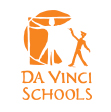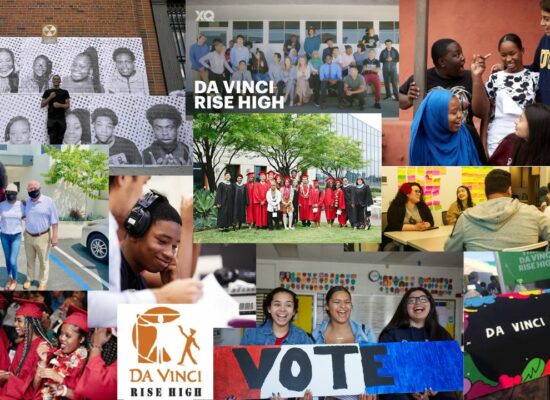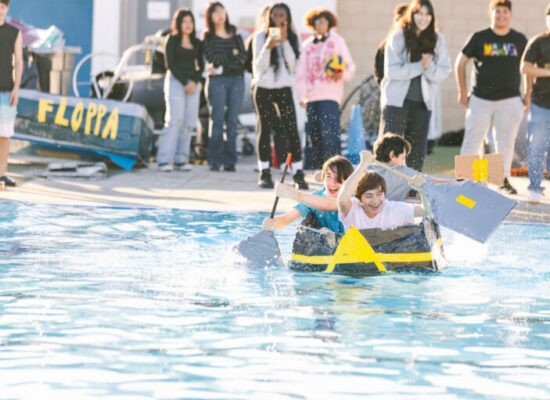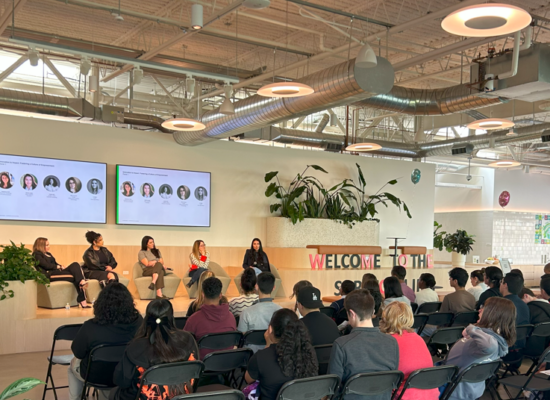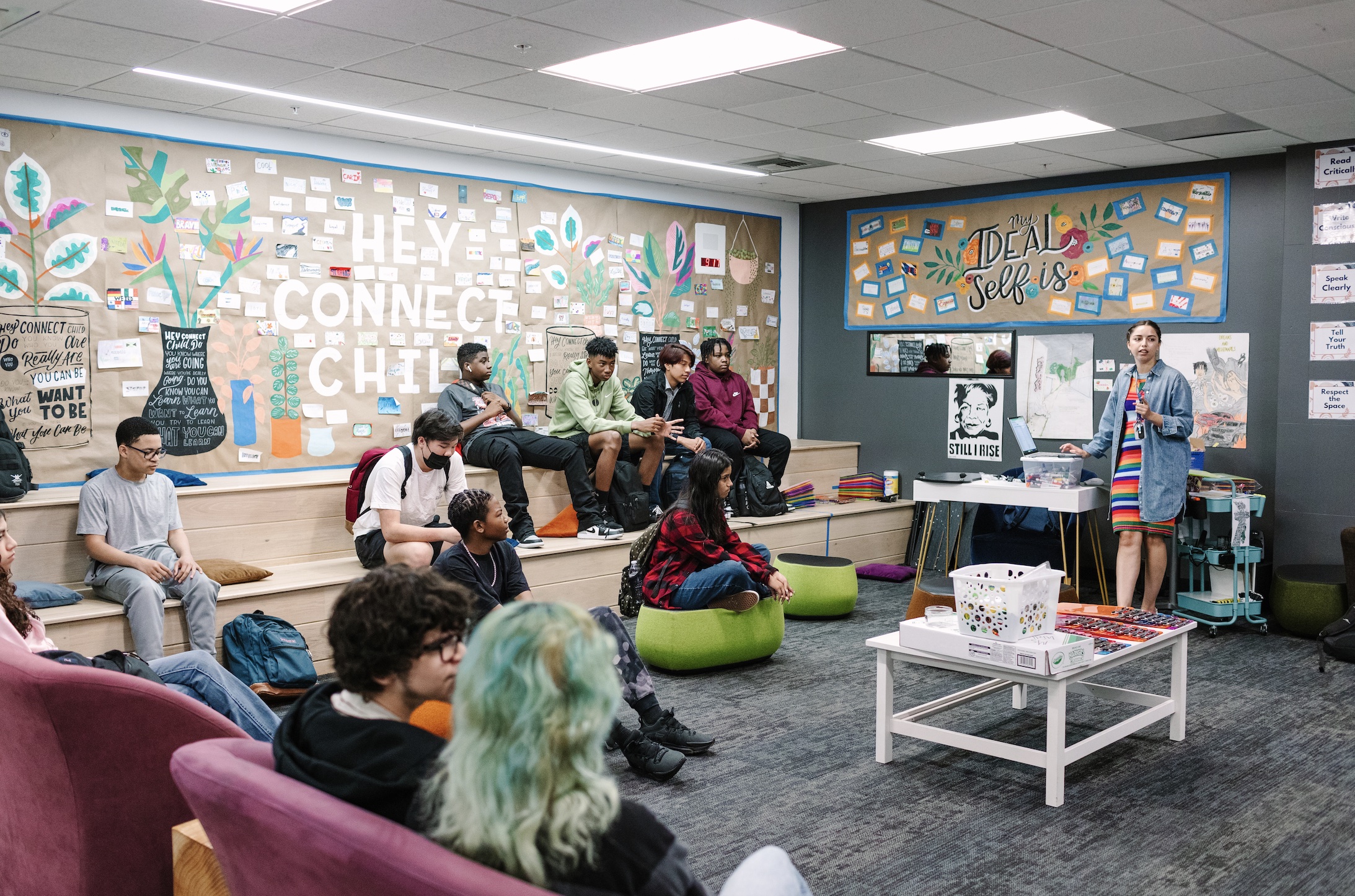
Dual Enrollment Helps Shape and Transform the Lives of Kids at Da Vinci Connect High School
When Milissa Sutton and Leo Millot chose Da Vinci Connect High School, they knew the idea of earning a college degree, and/or taking college classes, while in high school intrigued them, but they didn’t realize all the other life-changing benefits they would receive in addition to those college credits and college degrees.
“For starters, I got into every university I applied to,” said Leo Millot, a current senior at Da Vinci Connect High School. “Even the stretch schools that I didn’t think I’d get into, like UCLA and USC, I got into,” he said.
Senior Milissa Sutton, who is about to complete her AA degree in Business while attending Connect, echoed the same, “I applied to 13 universities, and I got into all but one,” she said. “I got into my dream school, which is Spelman, and I also got into other great schools like Howard, USC, UC Berkeley, UC San Diego, and more. In fact, Berkeley just flew me out to visit their campus for a few days, and I just got home, so that was fun,” she continued. (UC Berkeley just extended a full-ride scholarship to Milissa one day before College Decision Day, and we learned she has accepted it! Congratulations, Milissa!!)
According to college admission coaches, what colleges are looking for when students apply has changed over the last two decades. Twenty years ago, colleges looked at all applications that came in and chose the students with the best grades and highest SAT/ACT test scores.
Nowadays, colleges aren’t as interested in test scores; they’re looking for so much more from applicants. In fact, one of the top things they’re looking for is if students took full advantage of the challenging coursework available to them at the high school they attended. Did they choose to challenge themselves? Did they do challenging coursework that was of interest to them? Did they maximize the opportunities available to them at their school and in the community, at community colleges, or in internships and extracurricular activities that they’re passionate about?
“When college admissions’ officers are reading applications, they read them by high school,” said Michelle Mai, CEO and founder of College Planning Source. “They first want to see how applicants performed relative to the opportunities at their high school and compared to their peers at the same high school, then they compare applicants against a broader group,” she continued. “Admissions officers are also looking not just for any extracurricular activities, they want to know if students are doing things they’re passionate about, and doing extracurricular things that align with the majors they’re applying for.”
For Connect High School students, having dual enrollment baked into the school’s model, is proving to be very helpful for many reasons—and especially helpful for the students who choose to take full advantage of Connect’s dual enrollment opportunities and either get their AA degree, like Milissa, or get two-thirds of the way toward it, like Leo.
“Connect’s dual enrollment model is very unique, and that coupled with Leo’s extracurricular activities – activities that aligned perfectly with the business major he was applying for – helped him on his applications tremendously,” said Mai.
Leo has no doubt that taking advantage of Connect’s dual enrollment opportunities helped him in his college applications, and he appreciated that he could scale it up or down based on his goals and desires. “That’s the biggest thing with dual enrollment at Connect,” said Leo. “Students get to choose how they want to use that resource. Students have the option to tailor it to meet their goals because there’s so many different classes in dual enrollment that you can take, which is what sets it apart from just regular high school curriculum or even AP classes. You can take stuff you’re interested in and challenge yourself, and since Da Vinci doesn’t have AP, that’s where dual enrollment comes in and it helped me in my college acceptance process, maybe even more than AP would have,” he said.
Strengthening the Path to College & Beyond
Leo and Milissa also confirmed what researchers and studies have been concluding: dual enrollment not only strengthens students academically, it also strengthens their aspirations and beliefs about themselves and their capabilities; it prepares them mentally for the rigors of college and life; and it teaches them an intrinsic set of social-emotional competencies and self-management skills that helps them navigate college/workplace processes, the academic content of college, and the mindset necessary to persist through challenges.
“Just knowing that I can do it has definitely helped me because I’ve proven to myself that I know how to balance high school work and college work,” said Milissa. “So, going into college, I already know how to balance life and that’s a skill that not everybody has,” she continued.
Since Connect’s model, by design, requires students to take at least one college course each year, all students have the opportunity to learn some of these hard and soft skills, as well as develop the mindset that they can do college work, while in high school, and succeed.
“Looking back over the years from 9th grade to now, I did 13 courses of college work, when I didn’t have to, and when you get the results from your efforts, you realize you can do that level of stuff and wherever I go in life, I can push myself and I know I can do it,” said Leo.
Recently, Connect entered into partnership with Arizona State University (ASU) to further this mission, and to help ensure the college classes students take are transferable to four-year institutions, thereby cutting down on the number of years a student needs to spend at a four-year university, decreasing the expense of college—and increasing the likelihood students will finish their degrees.
At Connect, students take their college classes as a part of their standard curriculum, and unlike most dual enrollment models, which use community colleges exclusively, Connect’s students take their college classes on site with either ASU or Southern New Hampshire University (SNHU). (Some students also take community college courses and Connect administrators are working with El Camino College to increase offerings next year.)
Currently, Connect’s mandatory minimum dual enrollment college courses are Biology, English, Psychology, and Sociology. Students are also able to take ASU’s asynchronous courses, under what ASU calls its Universal Learner courses, which are college courses that are open to anyone, at any age, anywhere in the world. Connect staff are working with ASU to introduce additional courses that may include math, history, financial literacy, an Introduction to College course, and more.
“Any community that has traditionally not been included in higher education, ASU sees as a community that we try to build learning opportunities that can serve those learners,” said Dr. Scott Weatherford, ASU’s Executive Director of Universal Pathways, Learning Enterprise. “Our open access, Universal Learner courses that Da Vinci uses for dual enrollment are different from traditional college dual enrollment courses in that our courses don’t have enrollment limitations, such as passing a certain test, having a certain GPA, and you don’t have to be a minimum grade level. We’ve removed the barriers to college-level access so that people in all communities, including underserved communities, can qualify and find college accessible to them.”
And with ASU’s Universal Learner courses, students only have to pay for the course after they’ve completed it satisfactorily and earned a grade they’d like transcripted. In other words, ASU has eliminated most of the risk for students of taking college courses in high school.
For all Connect students, Connect pays the cost for students and students can still decide from course to course if they want it added to their transcript. This flexibility also makes it safer for high school students to take the risk of stretching themselves into a college class since they know they can choose at the end if they want that class to follow them through life on their transcript.
“It’s amazing how much logistics can be a barrier,” said Michelle Rainey, Executive Director of Da Vinci Connect TK-College. “When you give kids the agency to choose whether or not to transcript, you make it possible to take a risk on college. So many kids won’t take a dual enrollment community college class because if they fail, it’s there forever. So what do schools do? They only let the high-flying students do it when they’ve proven over and over again that they can. This creates inequities in access and inequities in the belief that all kids can be successful in college,” she continued.
In Connect’s dual enrollment model, Connect’s leadership believes there’s power in presenting kids in high school with experiences that mimic the adult lives they’re going to lead. And studies show that if you can get kids through the mental, time, and financial hurdle of college by showing them they are college capable because they’re passing college courses now, then it sets them up for a lifetime of success.
“Every day, by design, we are teaching kids that college is for them,” said Rainey. “We are teaching them that college isn’t just for other people; you are taking coursework now that shaves time off your future path and shows you that you are capable of doing it now,” she continued.
This year, Connect will graduate 64 students with 91% of them going on to attend colleges such as UCLA, USC, Cal Poly, Penn State, and so many others while 9.5% are entering the workforce, joining the military and/or taking a gap year to make informed college and career plans. (Connect High School whole-heartedly supports every senior in making the best choice for their life goals and plans!)
And although Connect is only five years old, it is steadily making progress toward achieving its goal of making all students feel college capable, career ready and confident about their life after high school, while in high school.
Well done, Connect!
